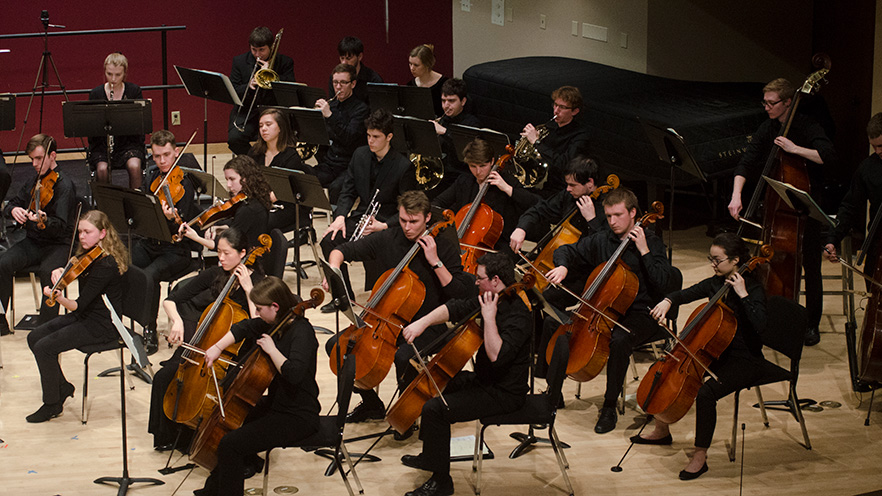Whitman Orchestra Heads to Portland
By Casey Brown

Since 1898, members of the Whitman College community have been performing orchestral music for the public.
Today’s Whitman Orchestra will perform jointly with Carthage College from Kenosha, Wisconsin, in Walla Walla on Friday, March 8, at 7 p.m. in Chism Hall, and then travel together to Portland State University for a performance on Saturday, March 9, at 2 p.m. in the Lincoln Recital Hall. Attendance is free and open to the public for both performances.
They will perform Symphony No. 8 in G major (1889) by Antonín Dvořák and Primera Suite Argentina (1923) by Alberto Williams.
Two Pieces With Common Roots
Paul Luongo, Director of the Whitman Orchestra and Chair of Music, says the two pieces have something important in common.
 “Despite a 30-year gap between these two works, they weave together similar motivations in exploring one’s own cultural identity.”
“Despite a 30-year gap between these two works, they weave together similar motivations in exploring one’s own cultural identity.”
Williams, the grandson of an economist and amateur composer, began studying piano at 8 years old. At 14, he attended the Escuela de Música y Declamación (School of Music and Recitation) in his birthplace of Buenos Aires.
Primera Suite Argentina was written when he was in his 60s and is one of a handful of suites he wrote during his long and accomplished career. It is a strings instrumentation with four movements: Hueya, Milonga (Santos Vega bajo un sauce llorón), Vidalita and Gato.
“Both pieces on the program are explorations of folk melodies and stylistic influences from the composers’ homelands. Williams explores his native Argentine style while Dvořák’s music reflects his Czech roots,” Luongo says.
Symphony No. 8 in G major was written by Dvořák when he was selected to attend the Bohemian Academy of Science, Literature and Arts. Dvořák was very proud of his Bohemian heritage. He was born in the former Austrian Empire, now the Czech Republic, in Nelahozeves, near Prague.
The symphony is composed of 27 parts, including those for flutes, piccolo, oboes, clarinets, bassoons, horns, trumpets, trombones, a tuba and a timpani, as well as strings, such as violins, violas and cellos.
It lasts 36 minutes and consists of four movements: Allegro con brio, Adagio, Allegretto grazioso—Molto vivace, and Allegro ma non troppo.
Musicians From Across Campus & Majors
The Whitman Orchestra numbers approximately 50 students each year and includes not only Music majors, but also students from across campus.
“In any of our instrument sections, one will find talented and dedicated Music majors who plan to make a career out of music alongside nonmajors who are just as committed to their musical development,” Luongo says.
Luongo isn’t surprised by the participation of other majors in the orchestra—which has about one-quarter Music majors and three-quarters nonmajors.
“I think this reflects the typical student we find at Whitman—engaged in many areas of growth,” says Luongo, who has been involved with the orchestra since he began teaching at Whitman 12 years ago.
Talent Scholarships
The Music Department awards talent scholarships to Whitman College students who demonstrate outstanding musical talent or potential, regardless of major. The next auditions are offered in the fall.